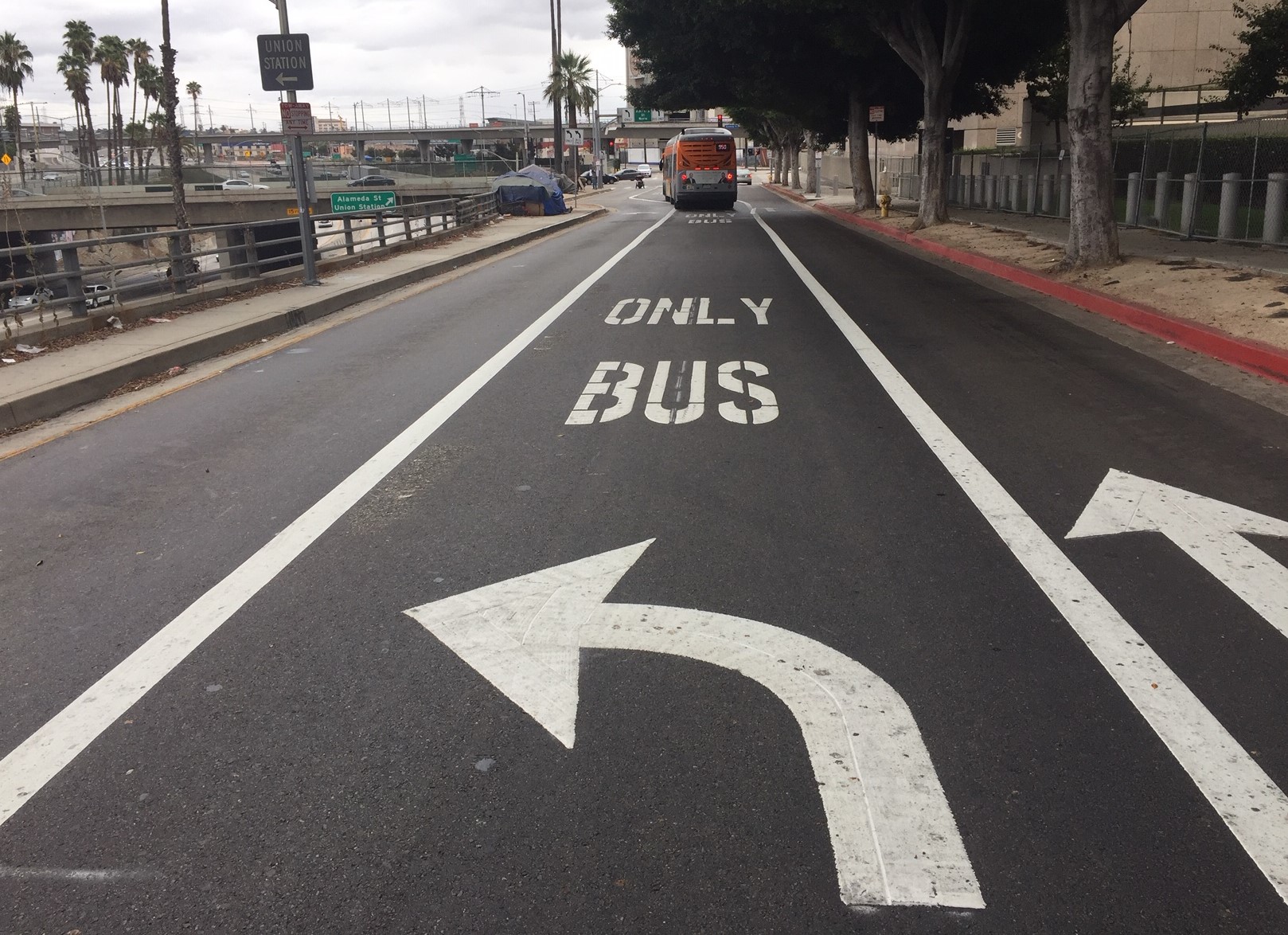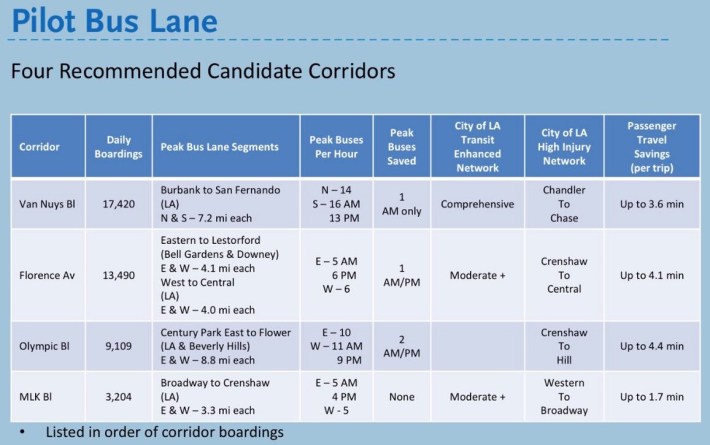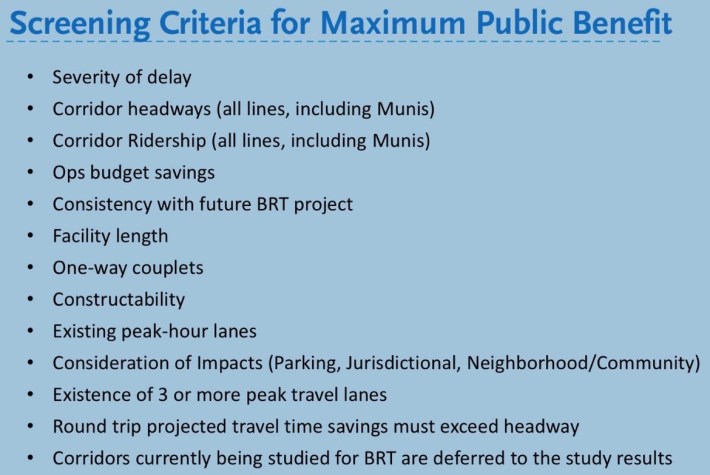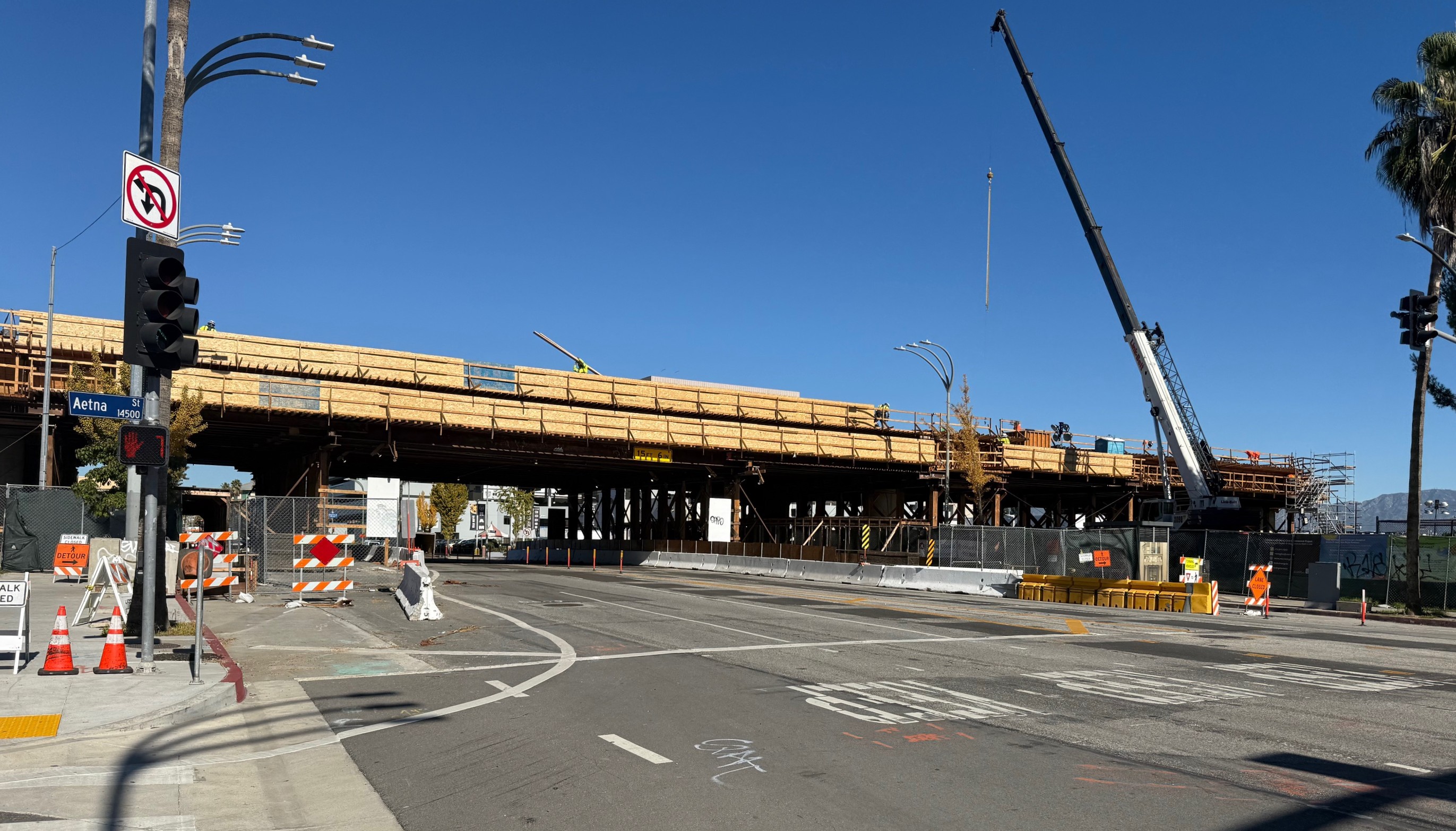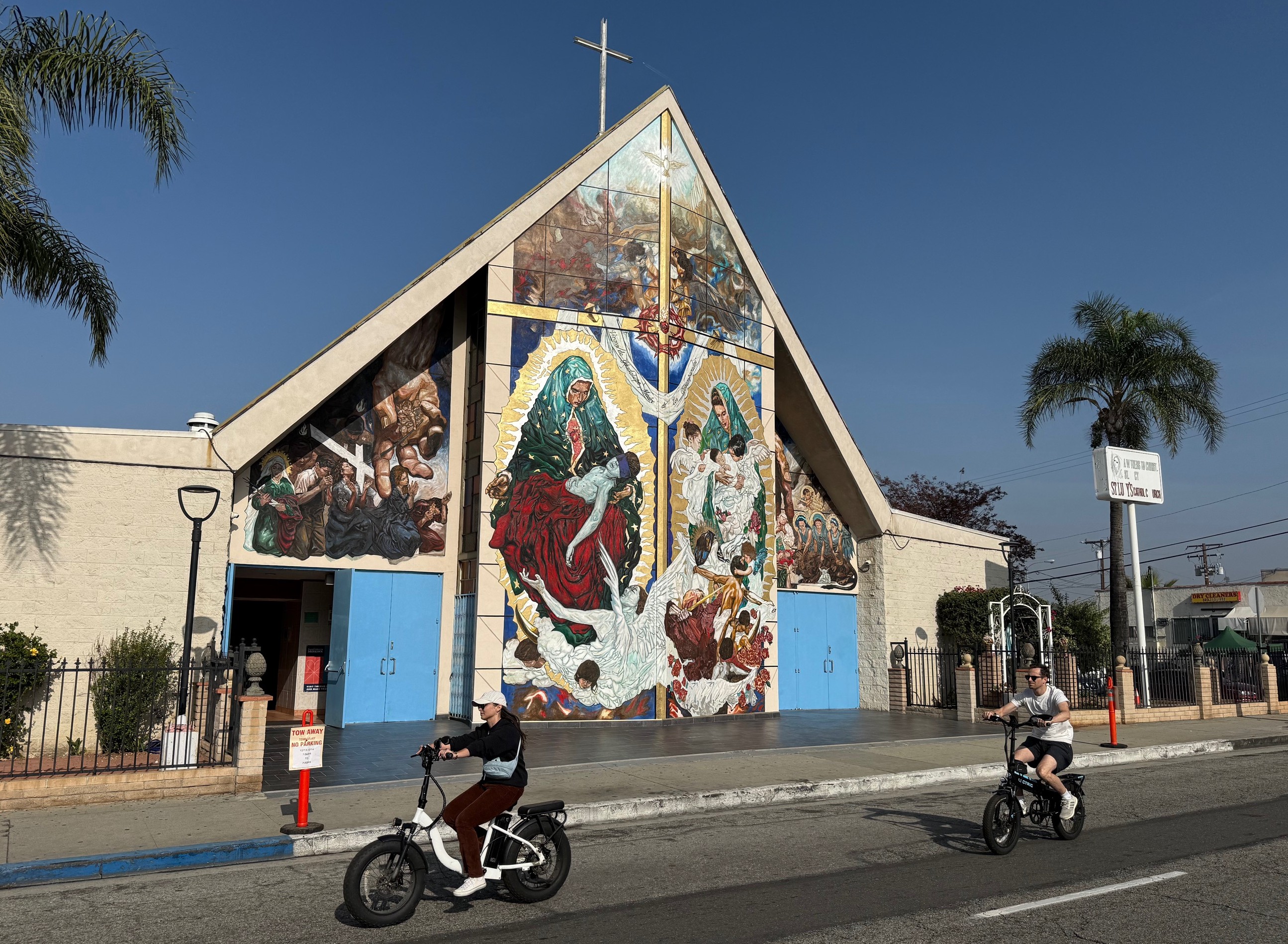In the past couple months, Metro and the L.A. City Department of Transportation (LADOT) collaborated to open new downtown Los Angeles bus lanes on 5th, 6th, and Aliso Streets. As was shown on last year's successful and popular Flower Street bus-only lane, downtown's bus lanes are big wins for many reasons. They can be installed quickly, at minimal cost to cash-strapped agencies. Bus lanes increase roadway capacity, improve the lives of bus riders, and even reduce transit agencies' operating expenses. There are some additional bus lanes coming soon in downtown L.A. - on Grand and Olive - but what comes next? How and where can this low-cost model spread outside of the downtown core, and outside the city of Los Angeles?
Bus-only lanes are becoming even more important as COVID recession-strapped agencies operate in car traffic reportedly returning to pre-COVID levels. Facing revenue shortfalls, the Metro board approved 20 percent bus service cuts, then approved a hobbled version of its NextGen Bus Study service reorganization. Much of the Metro board expressed their interest in restoring bus service as funding rebounds during an eventual COVID recovery. One way to demonstrate that commitment would be to continue to fast-track cost-effective bus speed improvements, especially bus-only lanes.
In addition to central Los Angeles and Wilshire Boulevard, some westside cities - Santa Monica and Culver City - have implemented bus lanes. LADOT is planning new bus lanes on Lincoln Boulevard to connect to those in Santa Monica. But, by and large, bus lanes remain uncommon throughout L.A. County.
Some hints at some potential next bus lane candidate streets are contained in a couple of Metro staff reports. Twitter user @Numble shared a 2019 pilot bus lanes presentation that Metro posted and later deleted. That presentation identified potential pilot bus lanes on Florence Avenue (two segments), Martin Luther King, Jr. Boulevard, Olympic Boulevard, and Van Nuys Boulevard.
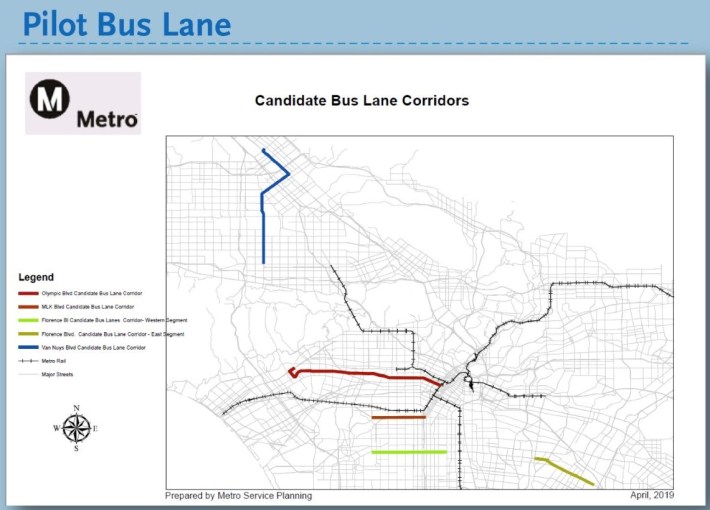
An October 2020 Metro Technical Advisory Committee presentation shares additional corridors under consideration for Bus Rapid Transit: Atlantic Boulevard, Broadway, La Cienega Boulevard, Olympic Boulevard, Sunset Boulevard, Venice Boulevard, and Western Avenue.
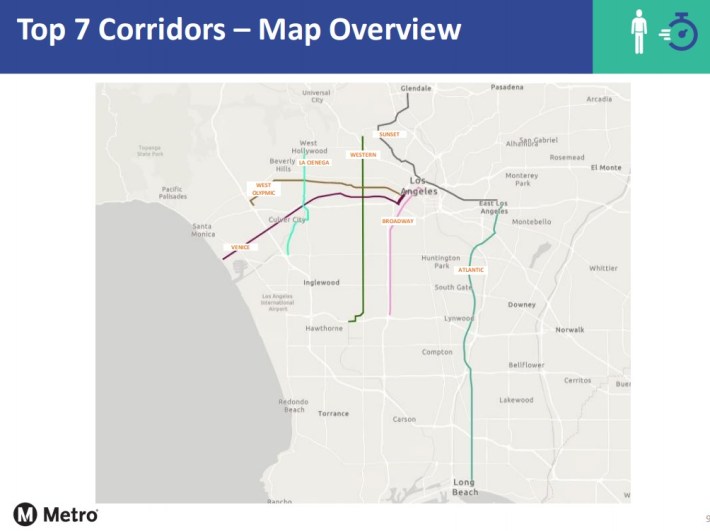
Several nonprofits are pushing for agencies to implement bus lanes. Investing in Place - through its Better Buses for L.A. Work Group - pressed for the completion of the downtown bus lanes. Streets for All is campaigning for bus lanes on Venice Boulevard, Lincoln Boulevard, and elsewhere.
Even with funding, bus lane politics can be difficult. Metro has encountered nimby resistance in planning a couple of fairly-well-funded BRT projects - through Eagle Rock and the North San Fernando Valley. For new bus lanes, the limiting factor tends to be political will, not funding.
Readers - where do you think L.A. County's next bus lanes should go? Which of the lines Metro has started to study do you think would work best?
Are there quick-build lessons from the three-block-long Aliso bus lanes? The Aliso bus lane is just a short congested stretch, but makes a big difference for lots of riders on Aliso's 61 buses per peak hour - including the Metro J Line and Foothill Transit Silver Streak. Are there shorter surgically precise interventions that can help speed up the buses that you ride?
Share your thoughts in the comments below.
